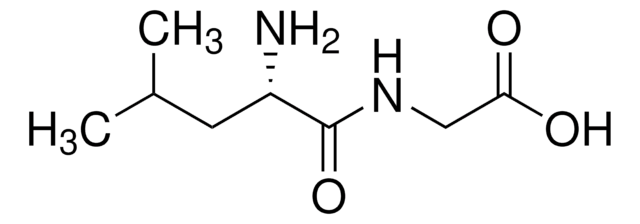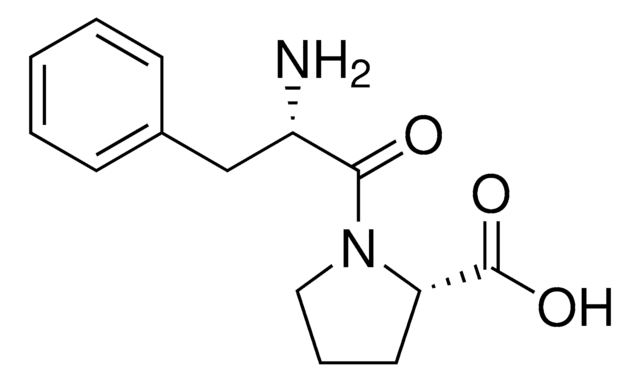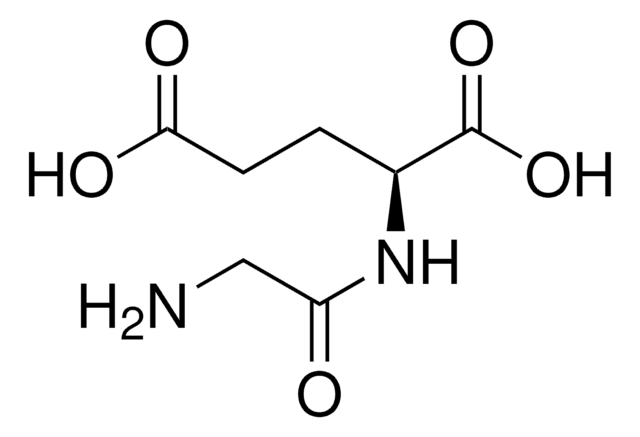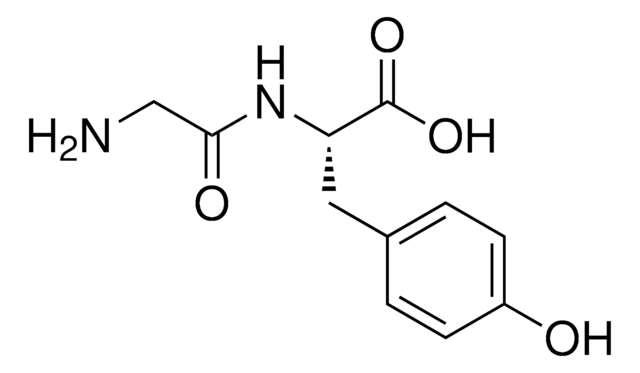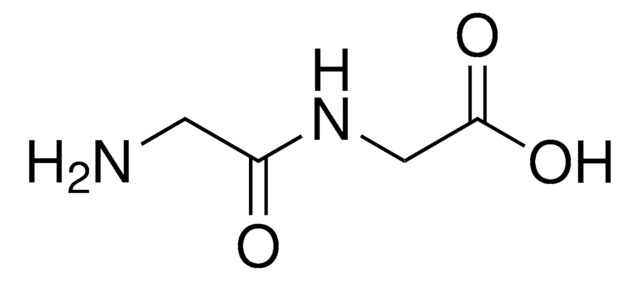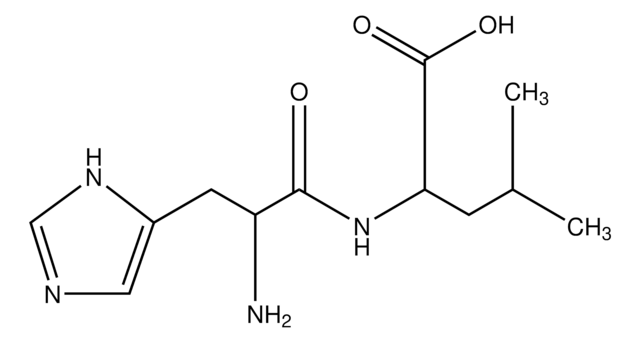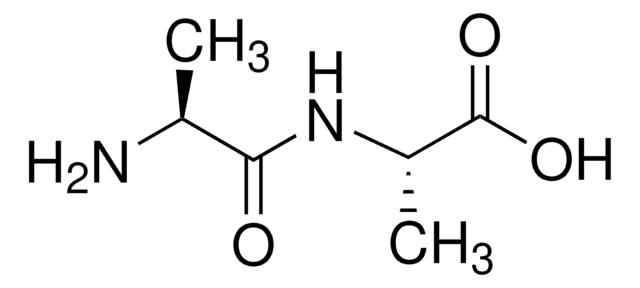G1627
Gly-His
powder
Autenticatiper visualizzare i prezzi riservati alla tua organizzazione & contrattuali
About This Item
Formula empirica (notazione di Hill):
C8H12N4O3
Numero CAS:
Peso molecolare:
212.21
Numero MDL:
Codice UNSPSC:
12352202
ID PubChem:
NACRES:
NA.26
Prodotti consigliati
Nome del prodotto
Gly-His,
Stato
powder
Livello qualitativo
Colore
white
Temperatura di conservazione
−20°C
Stringa SMILE
NCC(=O)NC(Cc1cnc[nH]1)C(O)=O
InChI
1S/C8H12N4O3/c9-2-7(13)12-6(8(14)15)1-5-3-10-4-11-5/h3-4,6H,1-2,9H2,(H,10,11)(H,12,13)(H,14,15)
YIWFXZNIBQBFHR-UHFFFAOYSA-N
Codice della classe di stoccaggio
11 - Combustible Solids
Classe di pericolosità dell'acqua (WGK)
WGK 1
Punto d’infiammabilità (°F)
Not applicable
Punto d’infiammabilità (°C)
Not applicable
Dispositivi di protezione individuale
Eyeshields, Gloves, type N95 (US)
Scegli una delle versioni più recenti:
Possiedi già questo prodotto?
I documenti relativi ai prodotti acquistati recentemente sono disponibili nell’Archivio dei documenti.
I clienti hanno visto anche
Giulio Vistoli et al.
Biochemical and biophysical research communications, 492(3), 487-492 (2017-08-24)
The study combines HPLC-based with MS-based competitive analyses to evaluate the quenching activity of a set of carnosine derivatives towards methylglyoxal (MGO) and malondialdehyde (MDA) chosen as representative of α- and β-dicarbonyls, respectively. The obtained results underline that these derivatives
Girolamo Casella et al.
Inorganic chemistry, 47(11), 4796-4807 (2008-05-08)
We have tested several computational protocols, at the nonrelativistic DFT level of theory, for the calculation of 1J(119Sn, 13C) and 2J(119Sn, 1H) spin-spin coupling constants in di- and trimethyltin(IV) derivatives with various ligands. Quite a good agreement with experimental data
E Matczak-Jon et al.
Journal of inorganic biochemistry, 12(2), 143-156 (1980-04-01)
1H and 13C nmr studies on the Pd(II)Gly-His complex interaction with cytidine and GMP have shown that the nucleoside binds the palladium complex via N3 nitrogen and the nucleotide binds that complex via N7 nitrogen. The analysis of the Cyd
Giampiero De Sanctis et al.
Journal of biological inorganic chemistry : JBIC : a publication of the Society of Biological Inorganic Chemistry, 11(2), 153-167 (2005-12-13)
The pH dependence of redox properties, spectroscopic features and CO binding kinetics for the chelated protohemin-6(7)-L-histidine methyl ester (heme-H) and the chelated protohemin-6(7)-glycyl-L-histidine methyl ester (heme-GH) systems has been investigated between pH 2.0 and 12.0. The two heme systems appear
Flora Carrera et al.
Inorganic chemistry, 43(21), 6674-6683 (2004-10-13)
Knowledge of the complexes formed by N-coordinating ligands and Cu(II) ions is of relevance in understanding the interactions of this ion with biomolecules. Within this framework, we investigated Cu(II) complexation with mono- and polydentate ligands, such as ammonia, ethylenediamine (en)
Il team dei nostri ricercatori vanta grande esperienza in tutte le aree della ricerca quali Life Science, scienza dei materiali, sintesi chimica, cromatografia, discipline analitiche, ecc..
Contatta l'Assistenza Tecnica.
